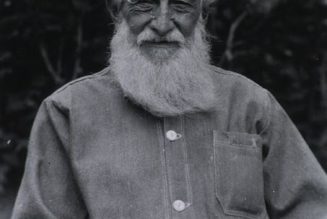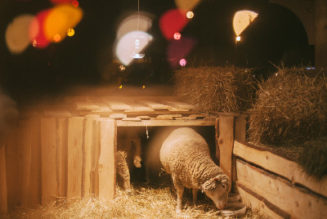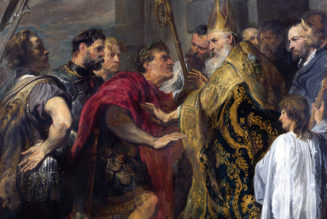Editor’s Note: Sign up to CNN Travel’s Unlocking Italy newsletter for insider intel on Italy’s best loved destinations and lesser-known regions to plan your ultimate trip. Plus, we’ll get you in the mood before you go with movie suggestions, reading lists and recipes from Stanley Tucci.
Ever dream of really getting away from it all? The Italians have long known how to do it.
For centuries this has been a land of hermits and religious retreats – and Italy is still full of secluded monasteries and abbeys where religious folk have lived in seclusion.
Only, you don’t have to be religious to live their lifestyle. With roughly €2 million ($2.16 million) you can buy a restyled retreat where meditation, peace and silence reign.
As the seat of the Catholic church, Italy is dotted with countless convents, monasteries, churches and priests’ housing. Many of these date back to the Middle Ages – and often, they’re up for sale. Some can cost less than an apartment in the prime real estate districts of Milan or Florence.
“Historical properties with a religious background and structure have enormous potential and appeal to foreigners wanting to live the spiritual side of Italy,” says Riccardo Romolini of Romolini Immobiliare agency, a Christie’s real estate affiliate.
“There are many convents and monasteries on sale because over time rich families with no heirs donated these properties to the local churches, which then dismissed the estates at a later stage by selling them back to private individuals. Sometimes religious orders put them up for sale for maintenance reasons,” he adds. He has recently sold one of these monasteries to an American family as a “private retreat.”
A near-religious experience
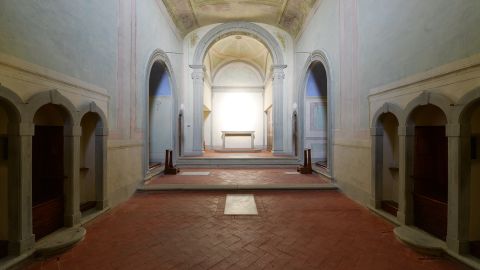
Want to join them? Romolini’s agency is currently selling a lavish villa located in the Tuscan hilltop village of Caldine near Florence, surrounded by olive groves and green rolling hills.
Built as the estate of the local parish priest, it was later inhabited by Dominican monks and restyled during the Renaissance. The mansion comes with a deconsecrated church, complete with frescoes, sculptures and bell tower. Once the village chapel, it’s where the current owners hold parties and concerts.
Owner Maria Silvia Papais is selling it for €2.35 million ($2.55 million). “It took me 10 days to buy it off 10 different priests who each had a stake. I was immediately struck by the beauty of the property, even though when I bought it in the 1980s it was crumbling and dilapidated. The gardens, the centuries-old trees, the views are spellbinding. I needed a rural home and I lived there for 35 years,” she says.
Papais restyled the entire property, which lies in an area once inhabited by ancient tribes including the Etruscans and was the stage for many battles. The Romans fought against the Barbarians here in the 5th century CE, while eight centuries later, Tuscan pro-Papal troops clashed against their enemies here.
The 5,000 square foot, five-bedroom main building where the priest lived features original stone portals, Renaissance fireplaces and decorations, terracotta floors and wooden beams.
The annexed church has frescoed walls and arches carved by master sculptors in finely engraved pietra serena, a grey local stone extracted from nearby quarries.
The villa is surrounded by a 12-acre park with of cypresses, maritime pines, oaks and bay trees. Over 700 olive trees yield tasty organic oil.
A private monastic park
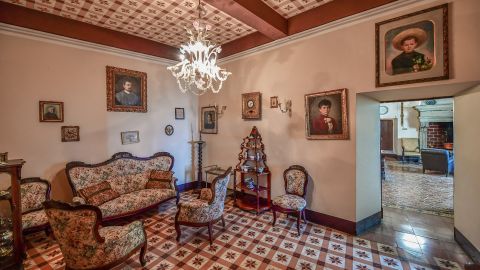
If that’s beyond your paygrade, for €1.38 million ($1.5 million), you can buy a 10,000 square-foot Franciscan monastery in the wild Ciociaria area between Naples and Rome.
It’s part of an idyllic hilltop hamlet – which the owners prefer not to name for privacy reasons. However, it’s near the town of Frosinone.
Known for its religious sites, Ciociaria is a maze of hermitages, churches and sanctuaries.
It has always been said to have been a crossroads of pilgrims, saints and various religious orders. Legend goes that even the Archangel Michael appeared here once to stop a bloody battle.
Enclosed by a private panoramic park, the estate is currently used as an events space, but is fully inhabitable with minimal fixes needed to spruce it up. A thorough renovation in 2022 upgraded the walls and roofs.
There are 10 bedrooms, eight bathrooms and a storage cellar all with original terracotta floors, wooden beams and coffered ceilings.
The crowning glory is the internal cloister featuring a covered loggia with vaulted ceilings where the monks whiled away the hours in prayer and meditation, strolling around the garden where they grew medicinal herbs. Underground you can see a restyled rainwater cistern.
“This monastery is the perfect example of how religious estates were passed between religious orders and private individuals several times over in history,” says Romolini.
The convent was built by the monks on a patch of land donated to them by local aristocrats, and carved out of a rocky hill flank. They kept the monastery until 1927 when it was abandoned and passed back into private hands.
The entryway is through a vaulted archway bearing the emblem of the Franciscans. Several panoramic terraced gardens overlook fields where sheep graze.
The monastery’s thick external stone walls are part of the fortifications around the village, and have a watchtower embedded within them.
A monastery within the village walls
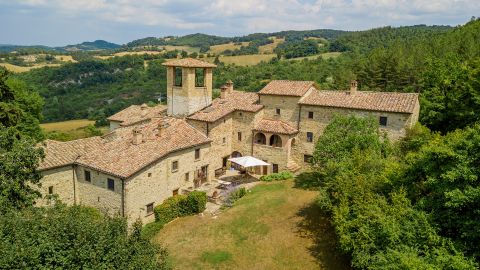
If you have a slightly higher budget there’s a 14th century Franciscan monastery and abbey up for €2.7million ($2.9 million) in Umbria’s upper Tiber Valley. Umbria is of course the land of St. Francis, and the monastery is currently a boutique resort offering peaceful stays, located midway between the towns of Gubbio and Città di Castello. Built over a Roman settlement and Lombard tower, it features an old well and two natural springs.
It turned into an anti-fascist stronghold during World War II when local partisans hid here and planned their resistance. According to its current owners, who wish to remain anonymous, it was also a refuge for the American consul in Nice, France. He had been captured by Fascists and brought to Italy, but managed to escape, joining Italian combatants here.
“These types of properties with a particular historical charm and a certain structural grandeur are increasingly the subject of attention from customers looking for prestigious estates,” says Jennifer Giraldi, senior partner and sales director at Lionard, the agency handling the sale.
“The large outdoor spaces, the dominant positions that guarantee privacy, are increasingly demanded features – especially since the pandemic.”
Ideal as a luxury country house, there are two buildings spread over 16,000 square feet with 10 standard bedrooms and six suites, a restaurant with panoramic veranda, a winter garden, a bar, and a church repurposed for relaxation. Old furniture, wooden decor, handcrafted ceramics, wrought iron lamps and fine fabrics decorate the interiors.
Surrounded by a park featuring stone steps and arches, there’s even a heated infinity pool with a solarium.


